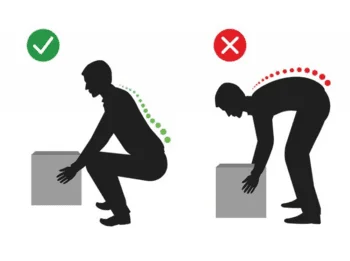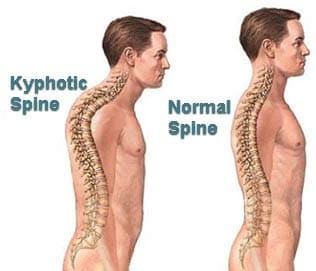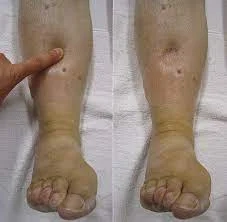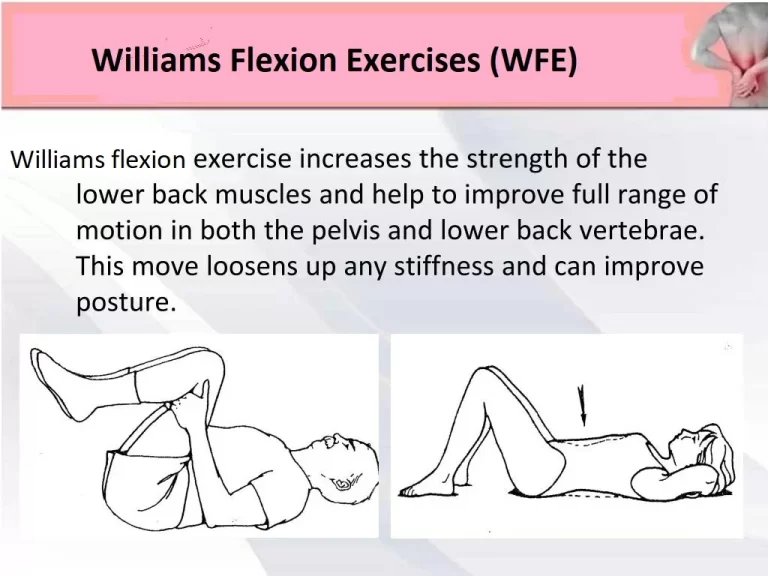Proper Lifting Techniques
Table of Contents
Introduction
Proper lifting techniques are essential skills that can help prevent injuries and promote overall musculoskeletal health. Whether you’re lifting heavy objects at work, moving furniture at home, or engaging in weightlifting exercises at the gym, using the correct lifting methods is crucial to avoid strains, sprains, and other potential injuries.
- Many lower back ailments are caused by improper lifting practices, which physiotherapists are specially qualified to correct.
- Lifting big objects should be done with caution to avoid damage.
- Back injury accounts for 38.5% of all work-related musculoskeletal disorders, with inappropriate lifting being one of the leading causes.
- As a result, learning proper lifting techniques is critical for staying safe at work and at home.
- This article explains proper lifting techniques as well as typical lifting challenges and offers helpful hints.
- Among the biggest causes of work-related injuries is lifting heavy things.
- Bending was the most commonly stated movement that resulted in back injury, followed by twisting and turning.
- Bending was the most commonly stated movement that resulted in back injury, followed by twisting and turning.
Lifting things incorrectly or carrying loads that are either too large or too heavy are major hazards linked with manually moving materials. - People are less likely to suffer from back sprains, muscular pulls, wrist injuries, elbow injuries, spinal injuries, and other ailments caused by lifting heavy objects when they employ wise lifting methods.
- When treating a patient with lower back pain, you should discuss the following lifting principles.
Principles of Safe Lifting
- Examine the immediate surroundings and the load that needs to be lifted.
- Bend the knees to lower the body to the load level.
- Maintain a broad, stable basis by keeping your feet shoulder-width apart.
- Maintain a straight (but not necessarily upright) back.
Maintain a firm palmar grasp. - Keep your arms tight to the trunk.
- Maintain the load/weight near the center of gravity and within the base of support.
- Point / pivot the feet in the movement’s direction. When raising, never rotate the trunk.
- Lift with your legs’ powerful muscles rather than your trunk’s postural muscles.
- Wait until you can receive help if the load is too big for one person.
Important Things To Remember
- For heavier or problematic loads, use mechanical means (e.g., hand trucks, pushcarts, etc.).
- Pushing is easier and safer than pulling.
- Lifting, carrying, or setting down a burden should be done as near to the body as feasible. Align your toes, hips, shoulders, and nose with one another.
Optimize your reaching. - If the burden is below you, stoop or crouch; if it is too high, use a ladder.
- Bend at the knees, not the hips, as a general rule.
When assistance is required, seek it. - Plan ahead of time for all aspects of the lift, including lifting, carrying, and lowering.
While lifting, try to use suitable handholds. If an object lacks a suitable handhold, consider alternatives such as storing the item in a container with good handholds, making a safe and proper handhold with an appropriate tool, and so on. - Wear personal protection equipment, such as gloves with a solid grip and steel-toed boots, if needed.
- Before carrying, lifting, pushing, or pulling be sure the road is clear.
For frequent and/or heavy lifting, use rest breaks and work rotation. - Place the things to be lifted in the “power zone.” i.e. close to the body, between the person doing the lifting’s mid-thigh and mid-chest. The arms and back can raise the most weight with the least amount of effort in this area.
- What is the greatest lifting technique for moving a heavy object?
- The greatest lifting method is to crouch down and raise the object off the ground with your legs rather than your back.
- That being stated, only lift objects that you are comfortable lifting. If you’re unsure, it’s preferable to get assistance from another person or use other technology (such as a lift).
What are OSHA’s lifting technique guidelines?
- If you believe it’s safe to lift the object by yourself, you should follow the Occupational Safety and Health Administration’s (OSHA) lifting method recommendations.
- Plan ahead
- It is critical to consider and plan before moving anything large.
- First, take a look at the item you’re about to carry and ask yourself the following questions:
- How heavy is it?
- Is it awkward to carry for one person?
- Where am I planning on putting this item? Will I be transporting it over a long distance? Are there any doors that I’ll have to open while carrying it?
- Are there proper handles? Do I need safety gloves?
- Do I have the tools necessary to complete this task securely, such as a lift?
- Should more than one person carry this?
- Is there anything that has to be moved first?
- Considering your surroundings, the item you intend to lift, and other factors can help you determine whether this is a one- or two-person activity or requires additional assistance, such as machinery.
- Stretch
- Warm up and stretch your muscles before lifting, just like you would before a workout.
- Spend a few minutes preparing your muscles and getting your blood flowing with some dynamic stretching (e.g., lunges, lower back rotations, arm circles).
- Lift
- You should also bend your knees, crouch down to grab the item, and use the strength of your legs to do the majority of the lifting. This can help with back pain and other musculoskeletal injuries.
- To lift properly, you must first ensure that you are in the proper position.
- The following are the steps to safely lifting a big item:
- Place yourself as close to the item as feasible. This will keep your back from becoming overworked. Stand with a broad base of support in front of the item (feet at least shoulder width apart).
- Bend your knees while keeping your back upright, shoulders back, and head straight forward. There should be an even curve to your lower back. This will help guarantee that you are lifting the item with your legs rather than your back.
- Place both hands on the item’s handles or sides.
- When you’re ready, step forward and push into the balls of your feet while slowly straightening your legs. Try not to twist your back.
- Hold the item as near to your body as possible, around the level of your belly button, with your elbows at your sides.
- Carry
- When changing directions, lead with your hips and keep your shoulders aligned with your hips. Maintain the load as near to your body as possible.
- If necessary, proceed in little steps to the location where you intend to place the object. If the distance is great, consider putting the object on a cart or other mode of conveyance.
- Set down
- Setting something down is the same as lifting, except in reverse:
- Stop walking and come to a complete stop in front of the location where you plan to place the object.
- As you lower towards the earth, slowly bend your knees and squat. Keep the item tight to your body, your core braced, and your head straight ahead.
- Place the item completely on the ground before raising it again.
- If the object will be placed above ground (for example, on a counter or table), walk up to the surface and gently lay it on top. If it’s somewhat lower than hip level, bend your knees and lower your body to safely set the item down.
Common lifting problems
- Even though nobody wants to damage themselves, carrying big objects can sometimes result in injuries. The most typical lifting issues consist of:
- lifting with your back
- To pick up anything, bend forward while maintaining a straight leg posture.
- Twisting when moving a heavy object or lifting one
- Raising anything hefty that is higher than your shoulders
- Using a partial grip (e.g., two fingers) to carry an excessively heavy or huge object
- Lifting objects when you’re worn out, exhausted, or injured
- Keeping your breath in
- Attempting to move and lift the object too rapidly
- You can lessen your chance of injury by lifting correctly and avoiding these typical lifting issues.
Tips and considerations
- To prevent injury, consider these helpful tips:
- Whenever in doubt, seek help.
Create a plan that addresses lifting and putting from beginning to end.
Hold your core tight when you lift. - When lifting something, always bend your knees, even if it appears light.
If at all possible, check the item’s weight by reading the label.
Ideally, get help from a lifting apparatus.
Use a cart, car, or other piece of equipment if you need to move the thing a long way.
Before lifting, always warm up and stretch. Focus on your safety before your job or other commitments.
When necessary, put on personal protection equipment (gloves, steel-toed shoes, etc.).
If you’re exhausted or intend to move several objects, take pauses.
Avoid grasping onto anything for too long.
Ask someone to open any doors or clear any obstacles if necessary.
In summary
Make sure you always use safe lifting practices to protect yourself. - Since your back is more susceptible to injury and your legs are among your strongest muscles, using your legs to lift big objects is the greatest lifting technique.
- Additionally, you should plan, lift only things that you are comfortable lifting on your own, and use the same level of caution while placing an object down as when lifting it.
- Additionally, never forget to seek help whenever you need it. Being cautious is preferable to taking a chance of getting hurt.
- Whenever in doubt, seek help.
Conclusion
When lifting improperly, the spine—which is made up of vertebrae, discs, and supporting muscles—is especially prone to injury. Bad lifting practices can result in injuries including muscular strains, herniated discs, and even chronic back issues. Through developing appropriate lifting skills, people may lower their chance of injury and encourage a strong, healthy physique.
This guide will go over the basic ideas of safe lifting, such as body mechanics, posture, and using the right tools. Gaining knowledge of and applying these strategies to everyday tasks can help people lead safer and more effective lives at work and outside of it. Protecting the spine, joints, and muscles while lifting big or small weights lays the groundwork for long-term well-being.
FAQs
Basis of Assistance.
Aim to place your feet shoulder-width apart.
Bend at the knees and hips.
Hold the weight tightly.
Keep the weight near your body.
Avoid lifting, twisting, and side bending.
Maintain proper posture.
Just before the lift, contract the muscles in your core that support stability.
You should exercise the correct technique when lifting any object for the following reasons: Cut down on the possibility of getting hurt. improved back health. makes sure you can finish work responsibilities safely.
Calculate the load. Verify that the load is balanced, steady, and light enough for you to raise it safely.
Arrange the work. Look for a path that is clear of trip and slip hazards.
Create a foundation of support.
Make a kneeling motion.
Take hold of things.
Lift using your legs, not your back.
Hold the load close.
Don’t twist; instead, pivot.
Remaining in the power zone when lifting near the body—between the mid-thigh and mid-chest heights—also reduces the risk factor related to distance. The arms and back can raise the most weight in this zone with the least amount of effort.
References
1 Lifting. n.d. Physiopedia. https://www.physio-pedia.com/Lifting.
2 Cpt, K. D. Ms., Rd,. 2022, September 21. The Best Lifting Techniques to Move Heavy Stuff Healthline. https://www.healthline.com/health/lifting-techniques.







